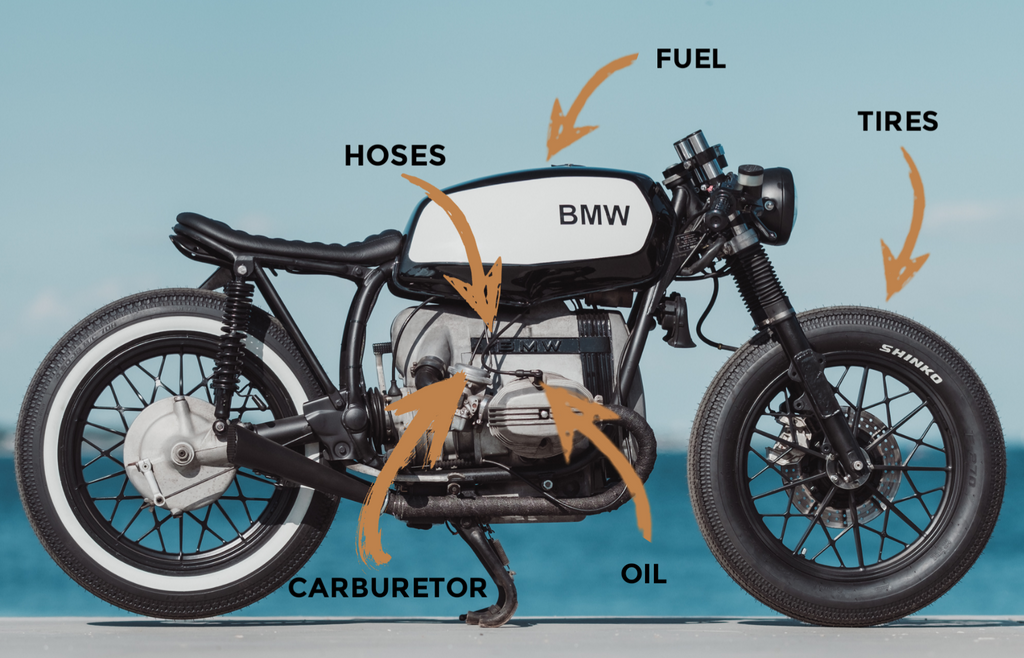1. Tires:
The neglected tires of a motorcycle can wear out faster due to lack of usage, so it's important to examine their condition before starting the motorcycle. Look for cracks, bulges, or flat spots if the tires were not elevated. Checking tire pressure is crucial, as motorcycles lose air pressure over time due to temperature changes and osmosis. Osmosis is the process by which air escapes through the rubber components of the tire, which necessitates the addition of more air to the motorcycle tires over time.
2. Carburetor:
The carburetor is essential for a motorcycle's functioning, but also the most temperamental. Preparing for winter storage with fuel stabilizer or an emptied fuel system can help, but if you use ethanol fuel, check the carburetor. Difficulty starting the motorcycle after storage is usually due to gunk buildup in the carburetor from residual fuel. Clogged jets result in insufficient fuel delivery to the engine. A full rebuild may not be necessary - try spraying carb cleaner inside after removing the bottom bowls.
3. Fuel:
Gas has a limited shelf life and deteriorates after approximately 30 days, so before winter storage, add fuel stabilizer or empty the fuel. Stabilized gas can last for six to twelve months. If gas is stored for over twelve months, it may need to be replaced entirely. Bad gas can be identified by its odor and appearance, and it can clog up the carburetor eventually. The best solution is to empty the tank entirely and refill it with fresh gas by disconnecting the fuel lines and setting the petcock on reserve, if available.
4. Oil:
It's crucial to change the oil after storing your motorcycle, regardless of whether or not you did it before. Even when the motorcycle is not being used, the oil can break down over time. Old oil could compromise the engine's performance and provide less than optimal lubrication, so it's essential to give it the best chance of running smoothly by supplying it with fresh oil.
5. Hoses and Wires:
Motorcycle hoses can deteriorate when not in use, similar to tires. Before starting after winter storage, check hoses for damage and replace as necessary. Also, inspect wires for any rodent damage.
6. Battery:
Motorcycle batteries can be challenging when taking them out of storage. Without a fully charged battery, starting your motorcycle requires more power. Test the battery's voltage with a multimeter, and if it's less than 12 volts, the motorcycle is unlikely to start. Consider getting a new battery if it needs to be charged before every startup.
7. Leaks:
After winter storage, wash your motorcycle thoroughly to prevent rust caused by dust and dirt. Hand washing is best, as high-pressure washers can damage delicate parts. Avoid using dish soap, as it can damage the clear coat.
Check your motorcycle's handling on the first ride, watching for sputtering, bumpy rides, vibrations, or pulling to one side. These issues could indicate carburetor clogs, vacuum leaks, tire problems, or backfires caused by loose airboxes or carburetor issues.
Have a great motorcycle season and enjoy your ride!

